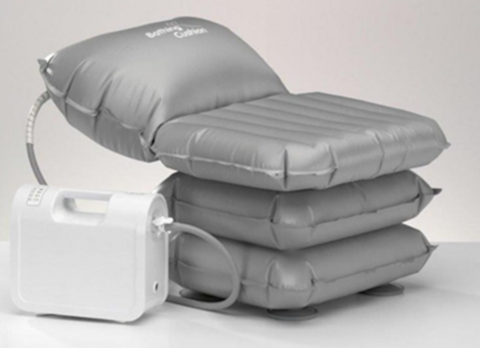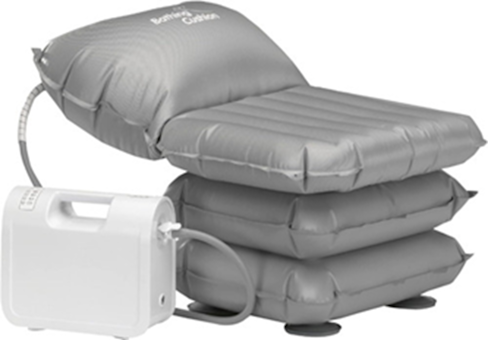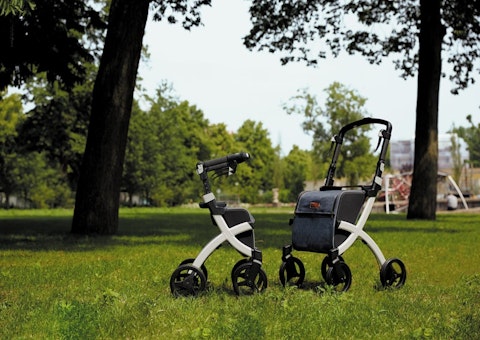
14 Apr 2025
For Help and Advice call: 01524 888453
Our blog17 Jul 2024
Daily living aids play a crucial role in supporting individuals who may face challenges in performing everyday tasks independently. Whether due to age, disability, injury, or temporary limitations, these aids encompass a wide range of products designed to enhance mobility, improve safety, and promote independence within the home environment.
Daily living aids come in various forms, tailored to address specific needs across different aspects of daily life. Here's a look at some of the most common types:
Button hooks are assistive devices designed to help individuals with limited hand dexterity or arthritis fasten buttons on clothing. Typically, a button hook consists of a handle on one end and a wire loop or hook on the other end. The user guides the wire loop through the buttonhole, hooks the button, and pulls it through, making it easier to manage buttons independently.
Dressing aids encompass a variety of tools that assist individuals in dressing and undressing independently. These aids include dressing sticks, which help push sleeves off or pull clothing on; zipper pulls, which assist in manipulating zippers; and elastic shoelaces, which turn lace-up shoes into slip-ons. Dressing aids are especially beneficial for individuals with limited mobility or strength.
Personal grooming aids consist of tools designed to assist individuals in maintaining personal hygiene and appearance. These aids may include adapted brushes with extended handles for easier reach, ergonomic grooming tools for ease of use, and nail clippers with large grips for improved handling. Personal grooming aids help individuals maintain independence and dignity in their grooming routines.
Personal hygiene aids are products that facilitate cleanliness and hygiene for individuals who may have difficulty reaching or manipulating traditional hygiene tools. These aids include long-handled sponges and brushes for bathing, toileting aids such as bottom wipers or hygiene sprays for bathroom use, and adaptive tools for skincare routines. Personal hygiene aids promote independence and help maintain personal health.
Shoe horns are tools designed to assist individuals in putting on shoes without excessive bending or straining. Typically made of metal, plastic, or wood, shoe horns have a curved shape that slides easily against the heel of the shoe, allowing the foot to slide in smoothly. Shoe horns are particularly useful for individuals with mobility limitations or who experience difficulty bending down to put on their shoes.
Sock and stocking aids are devices that assist individuals in putting on socks or stockings independently. These aids typically consist of a cradle with long handles. The sock or stocking is placed over the cradle, and the user uses the handles to pull the garment up their leg without bending over. Sock and stocking aids are invaluable for individuals with limited mobility or flexibility in their lower extremities.
Warming aids are products designed to provide warmth and comfort to individuals, particularly those with circulation issues or sensitivity to cold. These aids may include heated blankets or pads that can be placed on beds or chairs, heated gloves or socks for warming extremities, and heated wraps or cushions for targeted heat therapy. Warming aids help improve circulation and alleviate discomfort associated with cold temperatures.
2. Dining Aids
Adapted cutlery refers to utensils designed with modifications to assist individuals who have difficulty gripping or using standard cutlery. These adaptations may include larger handles for better grip, angled or curved handles to reduce wrist strain, or utensils with built-up handles for easier manipulation.
Clothing protectors, also known as bibs or aprons, are garments worn to protect clothing from spills and stains during meals or other activities. They are particularly useful for individuals who experience difficulties eating independently or have limited control over food spills.
Cups and mugs designed for individuals with special needs typically feature ergonomic handles for easier gripping, spill-resistant lids, and insulation to keep beverages at the desired temperature. These aids enhance independence and reduce the risk of spills during drinking.
Dinner trays are portable surfaces used to carry and serve meals. They often feature raised edges to prevent food from sliding off, handles for easy carrying, and some may have non-slip surfaces to ensure stability. Dinner trays are convenient for individuals who eat in bed or in chairs.
Drinking accessories include a variety of aids designed to assist individuals with drinking. This category may include items such as straws with valves to prevent spills, weighted mugs for stability, and straw holders to keep straws in place. These accessories accommodate different needs and preferences for drinking independently.
Plates and bowls for individuals with special needs are designed with features to enhance usability and safety. They may include non-slip bases to prevent sliding, high sides for easier scooping of food, or divided sections to separate food items. These aids make mealtime more manageable and enjoyable for users.
Big-button phones are telephones designed with large, easy-to-press buttons that are visually distinct and spaced apart for ease of use. These phones are particularly beneficial for individuals with visual impairments or dexterity issues, making it easier to dial numbers and navigate the phone's functions independently.
Clocks and watches designed for individuals with special needs often feature large, clear displays with high-contrast numbers and hands for easy readability. Some models may also include extra features such as audible time announcements, tactile markings, or alarms to aid those with visual or hearing impairments in managing their daily schedules effectively.
Hearing aids are small electronic devices worn in or behind the ear to amplify sound for individuals with hearing loss. They work by capturing sound waves, converting them into electrical signals, and then amplifying and delivering them into the ear. Modern hearing aids are highly customisable to individual hearing needs and preferences, providing improved clarity and quality of sound.
Magnifying glasses, also known as magnifiers, are optical aids used to enlarge and enhance the clarity of objects and text for individuals with low vision. They come in various forms, including handheld magnifiers, stand magnifiers, and wearable magnifying glasses (such as magnifying eyeglasses or head-mounted magnifiers). Magnifying glasses are essential tools for reading books, newspapers, labels, and other fine print materials with greater ease and comfort.
Air purifiers and fans are essential devices that contribute to indoor comfort and air quality. Air purifiers are equipped with filters that trap airborne particles such as dust, pollen, and pet dander, helping to reduce allergens and improve air circulation. Fans, on the other hand, provide cooling by circulating air within a room, promoting comfort, especially during warmer seasons. Together, these devices create a healthier and more pleasant indoor environment.
Key turners are adaptive tools designed to assist individuals with limited hand strength or dexterity in turning keys. They typically feature a large handle that provides a better grip and leverage, making it easier to insert keys into locks and turn them without excessive effort. Key turners help promote independence and simplify daily tasks such as unlocking doors or starting vehicles.
Reachers, also known as grabbers or reaching aids, are devices designed to extend an individual's reach. They feature a long handle with a gripping mechanism at one end, which allows users to grasp and retrieve items from high shelves, low cabinets, or other out-of-reach places without the need for bending or stretching. Reachers are invaluable tools for enhancing independence and safety in daily activities around the home or outdoors.
5. Medical Aids
Blood pressure monitors are electronic devices used to measure and monitor blood pressure levels. They typically consist of an inflatable cuff that wraps around the upper arm or wrist, a gauge to display readings, and a pump or automatic inflation mechanism. Blood pressure monitors are essential for individuals with hypertension or other cardiovascular conditions to track their blood pressure at home, providing valuable data for managing health and making informed decisions about lifestyle and medication.
Fingertip pulse oximeters are portable devices that measure oxygen saturation levels in the blood (SpO2) and pulse rate. They are non-invasive and work by shining light through the fingertip to detect the colour and absorption of haemoglobin, which indicates oxygen levels. Fingertip pulse oximeters are commonly used by individuals with respiratory conditions like asthma or COPD, as well as athletes monitoring oxygen levels during training or recovery.
First aid kits are essential emergency supplies containing a variety of medical supplies and equipment to provide initial treatment for injuries and illnesses. Contents typically include bandages, gauze pads, adhesive tape, antiseptic wipes, scissors, tweezers, and basic medications like pain relievers or antihistamines. First aid kits are indispensable in homes, vehicles, workplaces, and outdoor settings to address minor injuries promptly and effectively before professional medical help arrives.
Transcutaneous electrical nerve stimulation (TENS) machines are electronic devices that deliver small electrical pulses to nerve endings through electrodes placed on the skin. TENS therapy is used to relieve pain by stimulating nerves and altering pain signals in the brain. It is commonly used for managing chronic pain conditions such as arthritis, back pain, and muscle strains. TENS machines offer a non-invasive and drug-free pain relief option that can be used at home or under healthcare supervision.
Pill boxes and organisers are containers designed to help individuals manage and organise their medications. They typically feature compartments labelled with days of the week or times of day (morning, noon, evening, bedtime) to separate and store pills for each dose. Pill organisers are available in various sizes and styles, including portable designs for travel or larger units for home use. They are essential tools for ensuring medication adherence and reducing the risk of missed doses.
Pill crushers and cutters are devices used to prepare medications for easier consumption, particularly for individuals who have difficulty swallowing whole pills.
Both pill crushers and cutters are valuable aids for individuals managing multiple medications or those who require specific dosages tailored to their medical needs.
When considering where to acquire daily living aids, Better Independent Living stands out as a reliable and customer-focused provider. They offer a wide selection of high-quality products designed to meet diverse needs, ensuring that each item enhances comfort, safety, and independence for their customers.
Better Independent Living distinguishes itself with:
In conclusion, daily living aids play a vital role in enabling individuals to maintain independence and enhance their quality of life. Whether it's improving mobility, ensuring safety, or simplifying daily tasks, these aids provide invaluable support. Better Independent Living stands as a trusted partner in this journey, offering a comprehensive range of top-quality aids designed to empower individuals in their daily lives. For anyone seeking reliable solutions that prioritise independence and comfort, Better Independent Living is certainly a commendable choice.
14 Apr 2025
04 Apr 2025
27 Mar 2025

